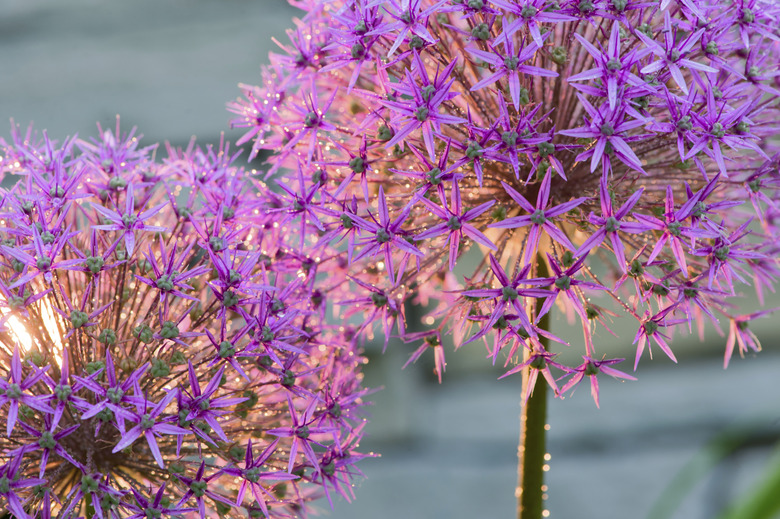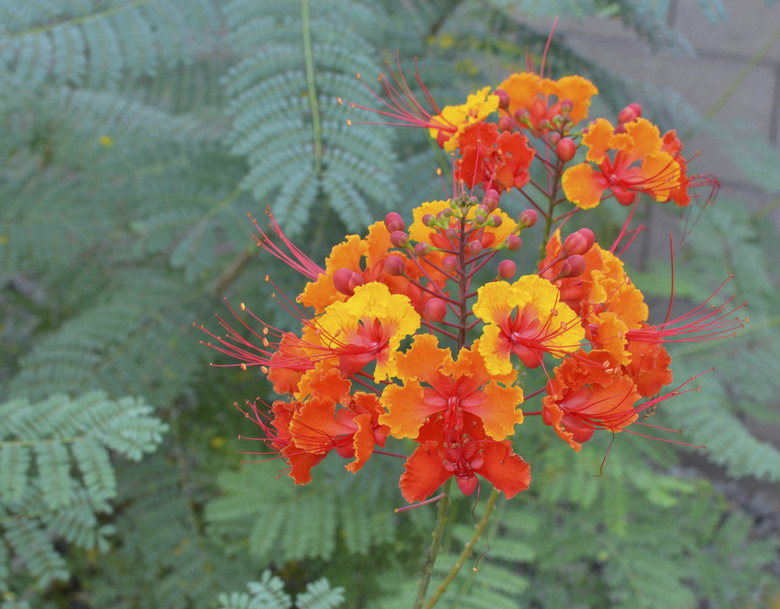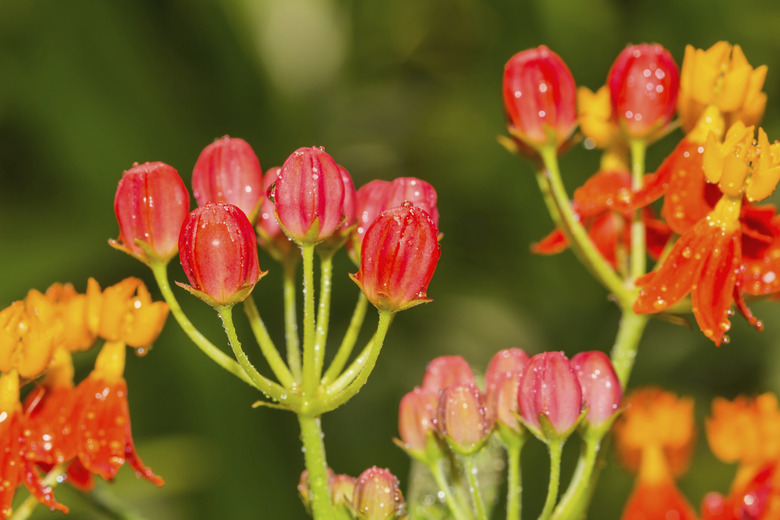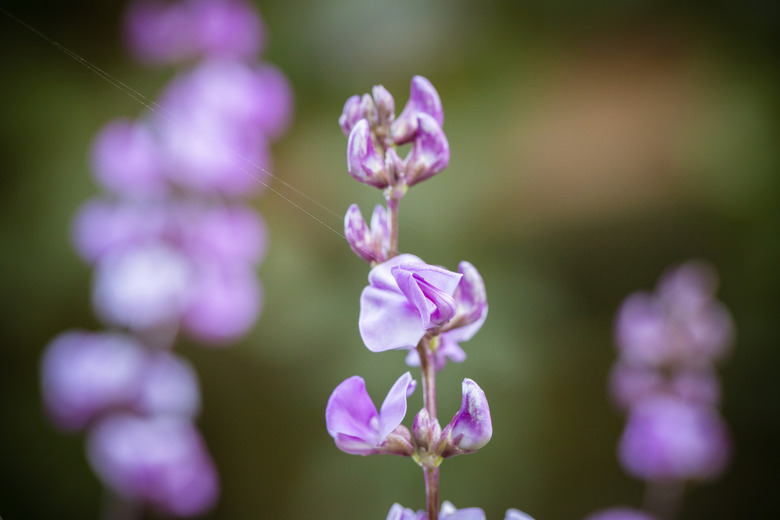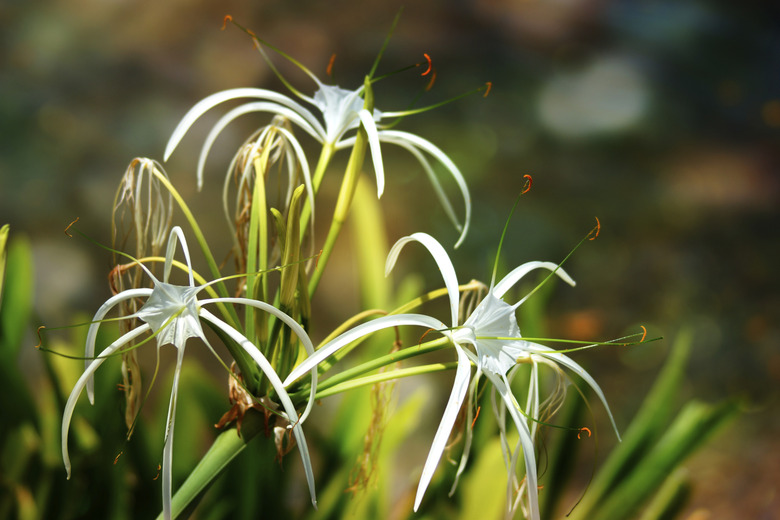Plants For Tropical Climates
Tropical-climate plants can tolerate a range of conditions but never freezing temperatures. Plants that originate from the geographical zone between the Tropic of Cancer and Tropic of Capricorn are traditionally called tropical plants, but not all of that zone is hot, steamy rainforest. Desert and semiarid areas also exist in the zone, and tropical plants may require full-sun conditions or semishade, such as that in a jungle. Tropical plants are hardy in U.S. Department of Agriculture plant hardiness zones 10b through 13.
Evergreen Shrubs
Bushes that are evergreens provide structure in a tropical-climate garden. An example is Indian bowstring hemp (Calotropis gigantea), which is hardy in USDA zones 11 through 12, grows 8 to 15 feet tall and wide, and bears butterfly-attracting, pale-purple and white star-shaped flowers in clusters that look like crowns. Thriving in full sun and moist soil, Indian bowstring hemp tolerates some drought when established in its location. Another example is peacock flower (Caesalpinia pulcherrima). It is hardy in USDA zones 9 through 11 and grows 10 to 20 feet tall and 6 to 12 feet wide. Bearing its orange-yellow flowers with red stamens most prolifically in full-sun sites, this shrub has sharp prickles, so handle it with care.
- Tropical-climate plants can tolerate a range of conditions but never freezing temperatures.
- Desert and semiarid areas also exist in the zone, and tropical plants may require full-sun conditions or semishade, such as that in a jungle.
Unification of Perennials
Repeating groups of tropical-climate perennials provide consistency in a garden display. Perennial options include blood flower (Asclepias curassavica) and fan flower (Scaevola aemula). Blood flower bears red-orange flowers with yellow hoods, attracting hummingbirds, butterflies and bees. Hardy in USDA zones 9 through 11 and growing 24 to 36 inches tall and 18 to 24 inches wide, this low-maintenance, sun-loving perennial is invasive in some areas and exudes a poisonous sap. Wear gloves when pruning it. Fan flower bears dark-blue, fan-shaped flowers and grows 9 to 18 inches tall and 12 to 24 inches wide. Its sprawling habit makes it suitable for growing in hanging baskets and containers or trailing over walls. Fan flower is hardy in USDA zones 10 through 11 and grows in full sun and partial shade.
- Repeating groups of tropical-climate perennials provide consistency in a garden display.
- Hardy in USDA zones 9 through 11 and growing 24 to 36 inches tall and 18 to 24 inches wide, this low-maintenance, sun-loving perennial is invasive in some areas and exudes a poisonous sap.
Scrambling Vines
Few plants are more reminiscent of tropical climates than vines. One of them is hyacinth bean (Lablab purpureus), which bears fragrant, pealike, rose-purple blooms followed by ruby-red seed pods 6 inches long. Growing 10 to 20 feet long and 3 to 6 feet wide, hyacinth bean blooms prolifically in a full-sun site and is perennial in USDA zones 10 through 11. Its mature beans are toxic when eaten raw. Another tropical vine is cypress vine (Ipomoea quamoclit). It is hardy in USDA zones 11 through 12 and grows 6 to 15 feet tall and 3 to 6 feet wide. Bearing tubular, scarlet flowers that attract hummingbirds and butterflies, this vine requires a full-sun site.
- Few plants are more reminiscent of tropical climates than vines.
- Bearing tubular, scarlet flowers that attract hummingbirds and butterflies, this vine requires a full-sun site.
Tender Bulbs
Tender bulbs can remain in the ground year-round in tropical climates. The bulb African blood lily (Scadoxus multiflorus) bears spheres of hundreds of tiny scarlet flowers with yellow-tipped stamens. Hardy in USDA zones 9 through 11, it produces one flower head per season and grows 12 to 24 inches tall and 9 to 18 inches wide. Cayman Islands spider-lily (Hymenocallis latifolia), another bulb plant, bears fragrant, white, spiderlike flowers in clusters of 10 to 16 per clump. Growing 12 to 36 inches tall and 24 to 48 inches wide, Cayman Islands spider-lily is hardy in USDA zones 10 through 11. Both bulb varieties grow in full sun or partial shade.
References
- Tropical Plant Society of Denver: Tropical Defined
- Missouri Botanical Garden: Calotropis Gigantea
- Missouri Botanical Garden: Caesalpinia Pulcherrima
- Missouri Botanical Garden: Asclepias Curassavica
- Missouri Botanical Garden: Scaevola Aemula
- Missouri Botanical Garden: Lablab Purpureus
- Missouri Botanical Garden: Ipomoea Quamoclit
- Missouri Botanical Garden: Scadoxus Multiflorus
- Missouri Botanical Garden: Hymenocallis Latifolia
